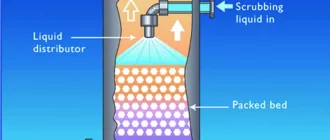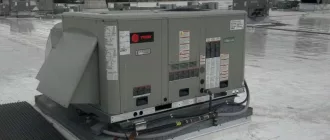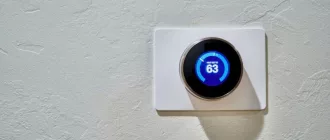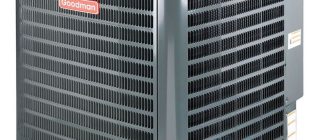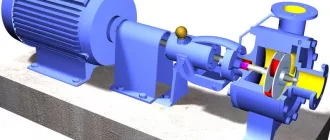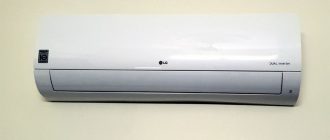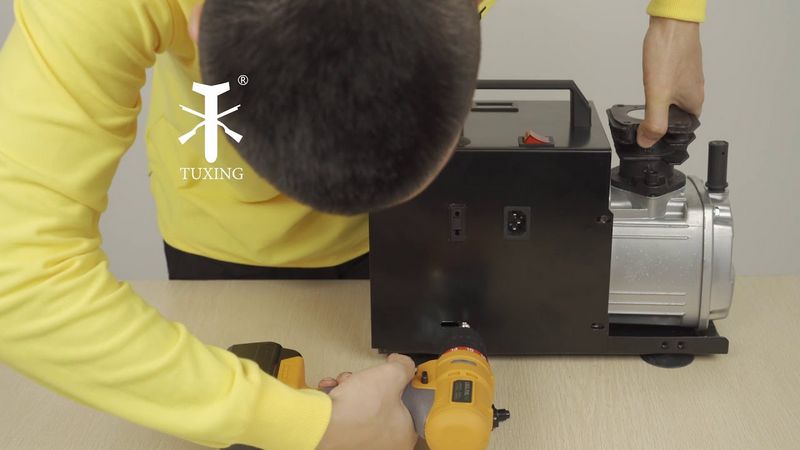
How long does it take an AC compressor to reset?
If your AC compressor stops working, you may be wondering how long it will take for it to reset. The answer to this question depends on several factors, including the type of compressor and the reason it stopped working in the first place.
In general, it can take anywhere from a few minutes to several hours for an AC compressor to reset. The time it takes for the compressor to reset can also depend on whether or not you take any steps to help speed up the process.
One way to help reset your AC compressor is to turn off the power to the unit and wait for a few minutes before turning it back on again. Another option is to check for any issues that may be causing the compressor to malfunction, such as a tripped circuit breaker or a clogged air filter.
It is important to note that if your AC compressor does not reset within a reasonable amount of time, it may be a sign of a more serious problem. In this case, it is recommended to contact a professional HVAC technician to diagnose and fix the issue.
In conclusion, the time it takes for an AC compressor to reset can vary depending on the specific situation. By taking appropriate actions and seeking professional help if needed, you can ensure that your AC compressor is reset and functioning properly as soon as possible.
How to Reset an AC Compressor in [Number] Simple Steps – Step-by-Step Guide
If you’re experiencing issues with your AC unit, one possible solution is to reset the compressor. Resetting the compressor can help resolve problems such as overheating or freezing. Here’s a step-by-step guide on how to reset an AC compressor in [Number] simple steps:
- Turn off the AC unit: The first step is to turn off the AC unit completely. Locate the power switch or circuit breaker for the unit and make sure it’s switched off.
- Wait for a few minutes: After turning off the AC unit, it’s important to wait for a few minutes. This allows the compressor to cool down completely before attempting to reset it. Waiting for around 5 to 10 minutes should be sufficient.
- Reset the compressor: Once the cooling-down period is over, you can proceed to reset the AC compressor. Locate the reset button, which is usually found on the control panel of the unit. Press and hold the reset button for about 3 to 5 seconds.
- Wait for the compressor to reset: After pressing the reset button, it may take a few minutes for the compressor to reset. During this time, you should hear the compressor start up and feel cold air coming from the vents. If you don’t hear or feel anything after a reasonable amount of time, it’s recommended to contact a professional technician for further assistance.
- Turn on the AC unit: Once the compressor has reset, you can turn on the AC unit again. Flip the power switch or circuit breaker back on and wait for the unit to start up. Check if the AC is functioning properly and making cool air.
Resetting the AC compressor can be a simple solution to resolve certain issues with your AC unit. However, it’s important to note that if the problem persists or if you’re unsure about performing a reset, it’s best to seek professional help. They have the expertise to diagnose and repair any complex issues with your AC system.
Step 1: Turn off Power Supply to the AC Unit
In order to reset the compressor of an AC unit, the first step is to turn off the power supply. This is an important safety precaution to avoid any potential electrical hazards during the reset process.
To turn off the power supply, locate the electrical circuit breaker or the disconnect switch that is connected to the AC unit. This circuit breaker or switch is usually located in the main electrical panel of your home or in a separate box near the AC unit.
Once you have located the circuit breaker or disconnect switch, switch it to the “off” position. This will cut off the power supply to the compressor and any other components of the AC unit.
It is important to wait for a few minutes after turning off the power supply before attempting to reset the compressor. This allows any electrical charge to dissipate and ensures that it is safe to proceed with the reset process.
| Step 1: Turn off Power Supply to the AC Unit |
| Step 2: Wait for a Few Minutes |
| Step 3: Turn on Power Supply to the AC Unit |
| Step 4: Set the Thermostat to the Desired Temperature |
| Step 5: Test the AC Unit |
Step 2: Let the AC Compressor Reset for [Number] Minutes
After the compressor has been turned off, it needs a certain amount of time to reset before it can be turned on again. The length of time it takes for the AC compressor to reset may vary depending on various factors such as the type of equipment and the temperature.
Generally, it is recommended to let the AC compressor reset for a specific number of minutes to ensure proper functioning. This waiting period allows the compressor to stabilize and prevents any potential damage that could occur from starting it up too soon.
Keep in mind that the exact duration for the AC compressor to reset may not be the same for every system. It is important to refer to the manufacturer’s instructions or consult a professional to determine the optimal waiting time for your specific equipment.
Note: Attempting to restart the AC compressor before it has properly reset can lead to performance issues or even cause damage to the unit. Letting it sit for the recommended time is essential for overall system longevity and efficiency.
Step 3: Check the Circuit Breaker and Reset if Necessary
In order to troubleshoot issues with your AC unit, it is important to check if the circuit breaker has tripped. This can often be the cause of the AC compressor not resetting properly. Follow these steps to check and reset the circuit breaker:
- Locate your circuit breaker panel. This is typically found in a utility room or basement.
- Open the circuit breaker panel door to reveal the individual circuit breakers.
- Look for the breaker that controls the AC unit. This may be labeled as “AC” or “Air Conditioner”.
- If the breaker is in the “tripped” position, it will be in between the “on” and “off” positions. It may also be slightly turned off.
- To reset the breaker, firmly push it to the “off” position and then back to the “on” position.
- Wait for a moment to see if the AC unit begins to reset. In some cases, it may take a few minutes for the compressor to restart.
If the AC compressor does not reset after following these steps, it may be necessary to contact a professional HVAC technician to further diagnose and repair the issue.
Step 4: Clear any Debris or Obstructions Around the AC Unit
When it comes to the proper functioning of your AC unit, it is important to ensure that there are no obstructions or debris around the unit. Over time, leaves, dirt, and other debris can accumulate around the unit, obstructing the airflow and causing the compressor to work harder. This can lead to overheating and a longer time for the compressor to reset.
To clear any debris or obstructions around the AC unit, follow these steps:
- Turn off the power to your AC unit from the main electrical panel.
- Remove any leaves, grass, or other debris that may have accumulated around the unit. Use a broom or a leaf blower to clear the area.
- Inspect the area around the unit for any obstructions, such as tree branches or shrubs. Trim any overgrown vegetation that may be blocking the airflow to the unit.
- Make sure that the unit is clear of any furniture, toys, or other objects that may be blocking the airflow. Move them away to create a clear space around the AC unit.
- Clean the condenser coils of the unit using a soft brush or a vacuum cleaner. This will help improve the efficiency of the unit and prevent overheating.
- Once you have cleared all the debris and obstructions, turn the power back on to the AC unit.
By clearing any debris or obstructions around the AC unit, you are ensuring that the compressor can reset properly and operate efficiently. This will not only help in improving the cooling performance of the AC unit but also extend its lifespan.
Step 5: Inspect the Air Filters and Clean or Replace if Dirty
One of the most important steps in maintaining your AC unit is regularly inspecting and cleaning or replacing the air filters.
Your AC unit’s air filters play a crucial role in ensuring the proper functioning of the compressor. When the air filters become dirty or clogged with dust and debris, it can restrict the airflow, causing the compressor to work harder and overheat. This can lead to a longer reset time for the compressor.
To inspect the air filters, locate the air filter panel on your AC unit. Remove the panel carefully and take out the filters. Examine the filters closely for any signs of dirt, dust, or debris buildup. If the filters are dirty, it’s time to clean or replace them.
If the filters are washable, you can clean them by gently rinsing them with water. Make sure to remove all the dirt and debris without damaging the filters. Allow the filters to dry completely before reinstalling them in the unit.
On the other hand, if the filters are not washable or severely dirty, it’s best to replace them with new ones. You can find compatible filters for your AC unit at your local hardware store or order them online.
Regularly cleaning or replacing your AC unit’s air filters can help maintain proper airflow and ensure the compressor’s smooth operation. This, in turn, can reduce the time it takes for the compressor to reset, keeping your AC unit running efficiently and effectively.
| It’s recommended to clean or replace your AC unit’s air filters every 1 to 3 months, depending on the usage and the amount of dust or debris in your home. |
Step 6: Examine the Thermostat Settings and Adjust if Needed
After allowing enough time for the AC compressor to reset, it is important to check and adjust the thermostat settings if necessary. The thermostat plays a crucial role in controlling the temperature and operation of the AC unit.
Here are the steps to examine and adjust the thermostat settings:
| 1 | Check the thermostat display to ensure it is on and functioning properly. |
| 2 | Verify that the thermostat is set to “cool” mode if you want the AC compressor to run. |
| 3 | Make sure the temperature setting on the thermostat is lower than the current room temperature to activate the AC unit. |
| 4 | Check if the thermostat has any additional settings, such as fan speed or humidity control, and adjust them accordingly. |
| 5 | If the thermostat is programmable, ensure that the programmed settings align with your desired cooling schedule. |
| 6 | If needed, replace the thermostat batteries to ensure proper functionality. |
By examining and adjusting the thermostat settings as needed, you can ensure that the AC compressor will reset properly and operate efficiently to cool your space.
Step 7: Ensure Proper Airflow by Checking Vents and Registers
Proper airflow is essential for the efficient operation of your AC system. If the vents and registers are blocked or obstructed, it can cause the AC compressor to work harder and take longer to reset. In this step, you will need to check and ensure that there are no obstructions in the vents and registers.
Start by visually inspecting all the vents and registers in your home. Make sure that they are not covered by furniture, curtains, or any other objects that can restrict airflow. If you find any obstructions, clear them out to allow for proper ventilation.
Additionally, check the air filters in your AC system. Dirty or clogged filters can also impede airflow and put strain on the compressor. If the filters are dirty, clean or replace them according to the manufacturer’s instructions.
Once you have cleared any obstructions and cleaned or replaced the filters, turn on your AC system and observe the airflow. It should be strong and consistent from all vents and registers. If you notice weak or uneven airflow, there may be an underlying issue with your ductwork or blower motor that requires professional attention.
Proper airflow not only helps the AC compressor reset more quickly after a reset, but it also ensures that your AC system operates efficiently and effectively. It helps maintain a comfortable indoor temperature and reduces the risk of compressor damage.
Note: If you have completed all the steps and your AC compressor still doesn’t reset or shows signs of malfunction, it is recommended to contact a qualified HVAC technician for further diagnosis and repair.
Step 8: Clean the Condenser Coils to Improve Efficiency
Dirty condenser coils can significantly impact the efficiency of your AC compressor. Over time, dust, dirt, and debris can accumulate on the coils and create a barrier that prevents proper heat transfer. This can lead to decreased cooling performance and higher energy consumption.
To clean the condenser coils, follow these steps:
- Turn off the power to the AC unit and wait for it to cool down.
- Remove any debris or loose dirt from the external surface of the unit using a brush or vacuum cleaner.
- Use a fin comb or soft brush to carefully remove any stubborn dirt or debris stuck in between the fins of the condenser coils.
- Mix a solution of mild soap and water in a spray bottle.
- Spray the soapy solution onto the condenser coils, ensuring thorough coverage.
- Allow the solution to sit for a few minutes to soften and break down any remaining dirt or grime.
- Use a soft brush or sponge to gently scrub the coils, paying extra attention to heavily soiled areas.
- Rinse the coils with clean water until all the soap residue is removed.
- Let the coils air dry completely before restoring power to the unit.
- Once the coils are dry, ensure that they are free from any obstructions or blockages.
Regularly cleaning the condenser coils can help your AC compressor operate more efficiently and extend its lifespan. It is recommended to perform this cleaning at least once a year or as needed, depending on the environmental conditions and usage of your AC unit.
Step 9: Verify if there are Faulty Capacitors and Replace if Necessary
One of the reasons why an AC compressor may need to reset is due to faulty capacitors. Capacitors play a crucial role in the functioning of the compressor, providing an extra boost of power to start the motor.
To determine if the capacitors are causing the reset issue, you will need to perform a visual inspection. Carefully examine the capacitors for any signs of damage, such as bulging, leaking, or burning marks. If you notice any of these signs, it is likely that the capacitors are faulty and need to be replaced.
Replacing faulty capacitors is a relatively simple process. However, it is essential to ensure that you have the correct type and size of capacitors for your AC system. Refer to the manufacturer’s guidelines or consult with a professional if you are unsure.
Before proceeding with the replacement, it is crucial to turn off the power to the AC unit and discharge any stored electricity. This step is necessary to prevent any potential injury.
To replace the faulty capacitors, start by disconnecting any wires connected to the old capacitors. Take note of the connections or take a picture for reference when reconnecting the new capacitors.
Next, remove the old capacitors from their mounting brackets. Install the new capacitors in the same position, ensuring a secure fit. Make sure to reconnect the wires to the corresponding terminals, following the previous connections or the reference picture.
Once the new capacitors are installed, double-check all the connections to ensure they are secure. Then, restore the power to the AC unit and test if the compressor resets properly.
If the AC compressor no longer needs to reset and functions correctly, you have successfully replaced the faulty capacitors. However, if the reset issue persists, it is recommended to contact a professional technician to further diagnose and resolve the problem.
Step 10: Inspect the Wiring and Connections for Damage
After completing the reset process and allowing enough time for the AC compressor to reset, it is important to inspect the wiring and connections for any signs of damage. Faulty or damaged wiring and connections can hinder the proper functioning of the AC compressor and potentially cause further issues.
Start by visually examining the wires and connections, looking for any frayed or worn areas. Check for loose or disconnected wires, as well as any signs of corrosion or damage to the connectors. It is crucial to ensure that all connections are secure and properly fastened.
If any damage or issues are detected, it is recommended to have a professional AC technician inspect and repair the wiring and connections. Attempting to fix electrical issues yourself may lead to further damage or even electrical hazards.
Remember, the correct functioning of the wiring and connections is essential for the AC compressor to operate efficiently. By regularly inspecting and maintaining these components, you can help prolong the lifespan of your AC unit and ensure it operates effectively.
Step 11: Reconnect Power Supply and Turn on the AC Unit
After you have successfully completed the previous steps, it is time to reconnect the power supply to your AC unit. This is an important step in the process, as the compressor needs electricity to function properly.
To reconnect the power supply, locate the breaker switch or the fuse box for your AC unit. Flip the switch or replace the fuse to restore power. Make sure to follow any safety precautions or guidelines provided by the manufacturer.
Once you have reconnected the power supply, it is time to turn on the AC unit. Depending on the model and make of your AC unit, there may be a specific button or switch to turn it on. Refer to the owner’s manual for instructions if necessary.
Give the AC unit some time to reset and start up. This process can take a few minutes. Be patient and allow the compressor to reset and start functioning.
During this reset period, you may hear some noises or experience a slight delay in cooling. This is normal as the compressor adjusts and gets back to its optimal functioning state.
Once the AC unit has reset and is running smoothly, you can adjust the temperature settings to your desired level. Enjoy the cool and comfortable air produced by your newly reset AC unit!
Remember to always consult a professional if you are unsure about any steps in the resetting process or if you encounter any difficulties. Safety should be a top priority when dealing with electrical equipment.
Step 12: Monitor the AC Compressor Resetting Process
Once you have completed all the necessary steps to reset your AC compressor, it is important to monitor the process to ensure it is working efficiently. Keep an eye on the compressor and check for any unusual sounds or vibrations. Additionally, pay attention to the temperature inside your home or office and see if it begins to cool down.
The amount of time it takes for an AC compressor to reset can vary depending on various factors, such as the size and model of your compressor, as well as the specific issue that caused it to shut off. In general, it can take anywhere from a few minutes to a few hours for the compressor to reset and start working again.
During this process, it is recommended to leave the AC system running and set to a lower temperature. This will help the compressor cool down more quickly and aid in the resetting process. Be patient and give the compressor enough time to reset before assuming that further action is needed.
If you notice that the compressor is not resetting after an extended period of time or if you encounter any other issues, it is advisable to contact a professional HVAC technician. They will have the necessary expertise to diagnose and repair any problems with your AC compressor, ensuring that it is functioning optimally.
Step 13: Test the AC Unit to Ensure Proper Cooling
Once the AC compressor has reset, it’s important to test the unit to ensure proper cooling. This will help determine if the reset was successful and if any further adjustments are needed.
Here’s how to test the AC unit:
- Turn on the AC unit and set the thermostat to a desired temperature.
- Wait for a few minutes to allow the compressor to start and begin cooling the air.
- Check the air coming from the vents to see if it’s cool and refreshing.
- Monitor the temperature in the room to ensure that it’s dropping as expected.
- If the air is not cooling or the temperature is not dropping, the reset may not have been successful. In this case, repeat the reset process or consider calling a professional for further assistance.
Remember that the length of time it takes for the AC compressor to reset can vary depending on the specific unit and the issues it was experiencing. It’s important to be patient and allow the unit enough time to reset and cool properly before drawing any conclusions.
Step 14: Schedule Regular Maintenance for the AC System
Regular maintenance is crucial to keeping your AC system in optimal working condition. By scheduling routine maintenance, you can prevent major issues and extend the lifespan of your AC compressor.
During maintenance visits, an HVAC technician will inspect your AC system, clean the components, and perform necessary repairs or adjustments. They will also check the compressor to ensure it is functioning properly.
Regular maintenance allows the technician to identify any potential issues before they become major problems. They can detect signs of wear and tear, leaks, or electrical issues that can affect the compressor’s performance.
By addressing these issues promptly, you can avoid costly repairs or replacements in the future. Additionally, regular maintenance helps to improve the energy efficiency of your AC system, saving you money on utility bills.
To schedule regular maintenance for your AC system, contact a reputable HVAC company. They will help you set up a maintenance plan that suits your needs and ensures your AC compressor is properly reset and maintained.
Remember, preventative maintenance is key to keeping your AC system running smoothly and efficiently. Don’t wait until something goes wrong – take proactive steps to care for your AC compressor and extend its lifespan.
Step 15: Troubleshooting Common AC Compressor Reset Issues
When resetting your AC compressor, you may encounter some common issues that can prevent the reset from being successful. Here are some troubleshooting tips to help you resolve these problems:
- No Power: If the AC compressor does not reset or turn on at all, check if there is power going to the compressor unit. Make sure the circuit breaker or fuse for the AC system is not tripped or blown. Verify that the thermostat is set correctly and functioning properly.
- Faulty Wiring: Inspect the wiring connections to the compressor for any loose or damaged wires. Tighten any loose connections and replace any frayed or broken wires. Faulty wiring can prevent the compressor from resetting or operating correctly.
- Low Refrigerant: A low refrigerant level can cause the AC compressor to trip the reset frequently. Check the refrigerant levels and add more if necessary. If the refrigerant is consistently low, there may be a leak in the system that needs to be repaired.
- Dirty Air Filter: A dirty air filter can restrict airflow and put strain on the AC compressor. Check and replace the air filter if it is dirty. This can help the compressor reset and operate more efficiently.
- Thermostat Issues: If the AC compressor continues to have trouble resetting, there may be an issue with the thermostat. Check if the thermostat is set to the correct temperature and mode. If necessary, replace or recalibrate the thermostat.
By troubleshooting these common AC compressor reset issues, you can ensure that your compressor resets properly and operates efficiently. If you are unable to resolve the problem on your own, it may be necessary to contact a professional HVAC technician for further assistance.
Q&A:
Why would an AC compressor need to reset?
An AC compressor may need to reset if it has overheated or if there is a power surge or interruption. The reset allows the compressor to cool down and restart properly.
How long does it take for an AC compressor to reset?
The duration it takes for an AC compressor to reset can vary. Typically, it may take anywhere from a few minutes to an hour. It depends on the specific unit and the reason for the reset.
What should I do if my AC compressor is not resetting?
If your AC compressor is not resetting, you may need to check the power supply, circuit breakers, and fuses. It is also advisable to contact a professional HVAC technician to diagnose and fix the issue.
Can I manually reset my AC compressor?
Yes, in some cases, you can manually reset your AC compressor. However, it is important to follow the manufacturer’s instructions and safety guidelines. If you are unsure, it is best to consult a professional technician.
Is it normal for an AC compressor to need frequent resetting?
No, it is not normal for an AC compressor to need frequent resetting. If your AC compressor requires frequent resets, it could be a sign of an underlying issue or malfunction. It is recommended to have it inspected by a professional to prevent further damage.
Why do I need to reset my AC compressor?
The AC compressor may need to be reset if it is not functioning properly or if you are experiencing issues with your air conditioning system.
How long does it typically take for an AC compressor to reset?
The time it takes for an AC compressor to reset can vary depending on the specific model and manufacturer. In general, it can take anywhere from a few minutes to several hours for the reset process to complete.

